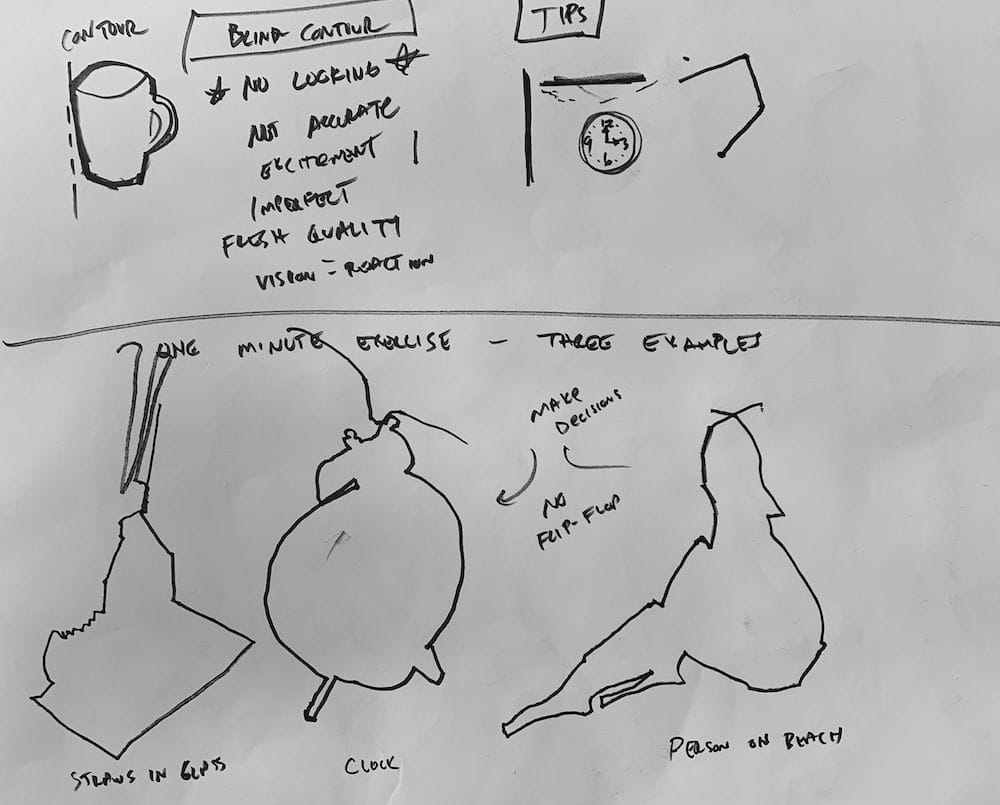Semi-Blind Contour Drawing
Think of your art time like a pie chart: some slices for finished art, some for exploration, and some for fundamentals. This semi-blind contour drawing exercise builds confidence and sharpens observation so you can elevate your drawing skills.

Think of your drawing practice like a pie chart. If you want to improve your drawing skills, you need to divide your creative time between beginner drawing exercises, exploration, and finished artwork. One of the most effective exercises is contour drawing — a method that trains observation and hand–eye coordination.
For years, I neglected this slice of the pie. I could draw “okay,” but I never gave serious time to perspective or foundational drills. And I see the same with students: they pour everything into finished art, but skip the simple exercises that actually make their drawings stronger.
That’s where the semi-blind contour drawing exercise comes in. It isn’t about making a masterpiece; it’s about sharpening your fundamentals. This drill builds line confidence, strengthens observation, and reminds you that practice is just as important as polished work.

Motivational Reminder
It doesn’t matter if the drawing looks strange or even a little awkward. What matters is that every line is a decision. Over time, this practice will sharpen your observation skills, make your lines more confident, and ultimately elevate your drawing skills.
More drawing lessons? Visit the Free Drawing Tutorials & Courses hub →




